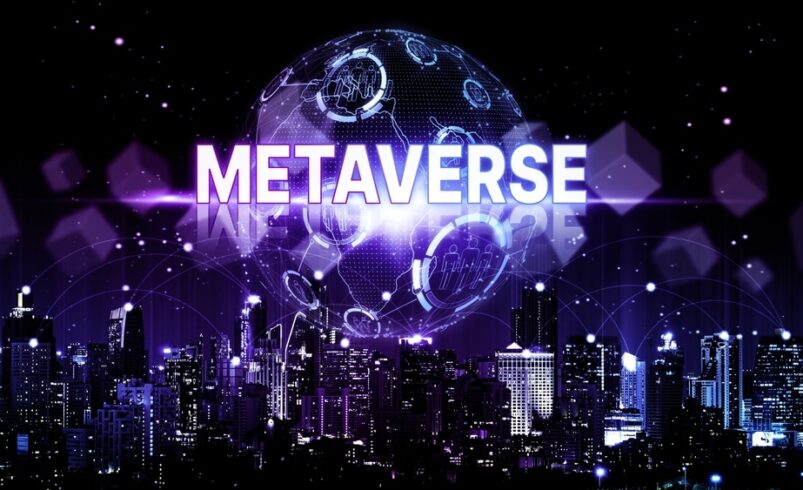Centralized vs. Decentralized Metaverse: An Insightful Exploration

In this comprehensive guide, we’ll delve into the rise of virtual worlds and evaluate the role of individuals within these domains. The nuances between centralized and decentralized metaverses will be clarified, allowing an informed decision about which approach aligns best with one’s objectives.
The ambition to establish a digital space where individuals could navigate without being bound by physical limitations led to the inception of the metaverse. This initiative offers users a novel and fully interactive arena where creation, education, and exploration are at the forefront. A metaverse has two foundational structures: one controlled by significant entities like Meta Platforms Inc (NASDAQ: META) and another decentralized model driven by its eventual denizens. The metaverse is the natural evolution of the internet, transitioning from simple content consumption to dynamic social media platforms and blending the tangible and digital worlds.
Understanding the Metaverse
A metaverse is a vast, enveloping digital counterpart of the real world. Discussion about the metaverse is complete with acknowledging the role of virtual reality (VR) and augmented reality (AR) equipment. Although some may conflate “metaverse” with “video game,” the core distinction lies in the metaverse’s depth of immersion, empowerment of the user, and real-time engagement. The term “metaverse” originates in Neal Stephenson’s 1992 novel “Snow Crash” but has since resonated beyond literary confines. A metaverse offers a digital platform for communication, professional collaboration, entertainment, and commerce.
Given its perceived status as the internet’s future iteration, numerous global corporations have shown keen interest. Interestingly, a significant portion leans towards the decentralized version. Let’s delve into the characteristics of both models.
Centralized Metaverse Explored
A centralized metaverse operates under the governance of a singular entity. This denotes that a single organization or individual holds the reins, shaping its trajectory.
From the dawn of the digital age, there has been a fascination with a virtual realm under central governance, coexisting alongside our tangible reality. Such a realm can be envisioned as a richly detailed digital landscape where real-world actions are emulated remarkably. Leveraging avatars and immersive simulations, this environment heralds a transformative phase in digital interaction, facilitating virtual collaborations and offering users bespoke digital engagements. A fitting analogy for a centralized metaverse would be a traditional banking system.
Characterized by proprietary servers and regulatory frameworks, a centralized metaverse has a singular authority overseeing its vast expanse. In platforms like Fortnite and Roblox, users navigate within the confines set by this central authority. While interactions and shared experiences are possible, users lack full autonomy over specific digital components.
One advantage here is the inherent structure and oversight. Should a user face issues like account breaches or transaction discrepancies, protective measures are available. However, the downside is a relative lack of freedom compared to its decentralized counterpart and vulnerabilities associated with single-point-of-failure systems.
Centralized Metaverse Examples:
Roblox serves as a notable centralized metaverse, hosting many users daily. The platform empowers users to design and generate revenue from their bespoke virtual worlds. These worlds coexist within the Roblox universe, displaying common elements like avatars and in-game currency. It’s compatible with most mainstream operating systems and requires no additional expensive equipment as it seldom utilizes AR or VR technologies.
Fortnite, set within a vast virtual domain, offers more than just gameplay, acting as a digital space for individuals to assemble. The game’s distinctive attribute is its cost-free accessibility, facilitating interaction amongst users on various devices, from personal computers to Android devices and gaming consoles.
Horizon World merges aspects of Roblox and the virtual reality portrayed in Ready Player One. This application accommodates gatherings of up to 20 users in a shared digital space and mandates a Facebook account for access. While it offers game development environments reminiscent of Minecraft, Horizon World leans more towards a social media platform.
The Decentralized Metaverse:
A metaverse’s level of decentralization can vary as it grows. True decentralization hinges on a distributed network and diffused ownership. In contrast to a centralized setup, decentralization implies that no singular entity possesses overriding control. The more stakeholders involved, the greater the metaverse’s decentralization.
In a centralized setup, one entity governs the entirety of the digital environment, even though users can interact and share experiences. However, platform developers wield influence rather than a solitary central authority in a decentralized metaverse.
Decentralization empowers users, granting them unbridled access and amplifying their influence over the metaverse’s trajectory. However, this also means users are responsible for their digital safety, necessitating vigilance regarding personal data sharing, given the absence of centralized oversight.
Decentralized Metaverse Examples:
The Sandbox (SAND) stands out, furnishing tools for crafting 3D designs, characters, and vehicles. Subsequently, these designs materialize as Non-fungible Tokens (NFTs) and can be integrated into various Sandbox worlds. The platform also supports NFT exchanges through its marketplace.
Decentraland has attracted significant attention, with renowned brands and celebrities endorsing it. The platform operates with its proprietary cryptocurrency named MANA.
Choosing the Right Metaverse:
The metaverse selection for a brand hinges on the desired customer experience. It’s pivotal for businesses to anchor themselves in metaverses conducive to their goals. Considerations include:
- Target demographic presence.
- The metaverse’s appeal to specific audience segments.
- Brand storytelling emphasizes identity and values.
- Strategic goal alignment.
- The overall user experience and value proposition.
Final Thoughts
The metaverse, though nascent, is evolving rapidly. Given today’s data-centric landscape, it’s paramount for users to exercise discretion regarding personal information sharing in the metaverse to ensure individual safety and integrity. The virtual nature of the metaverse underscores the importance of users retaining control over their data.
DISCLAIMER: It's essential to understand that the articles on this site are not meant to serve as, nor should it be construed as, advice in legal, tax, investment, financial, or any other professional context. You should only invest an amount that you are prepared to lose, and it's advisable to consult with an independent financial expert if you're uncertain. To obtain more information, kindly examine the terms of service and the assistance and support resources made available by the issuing or advertising entity. Our website is committed to delivering accurate and unbiased news, yet it's important to note that market conditions may change rapidly. Also, be aware that some (but not all) articles on our site are compensated or sponsored.








